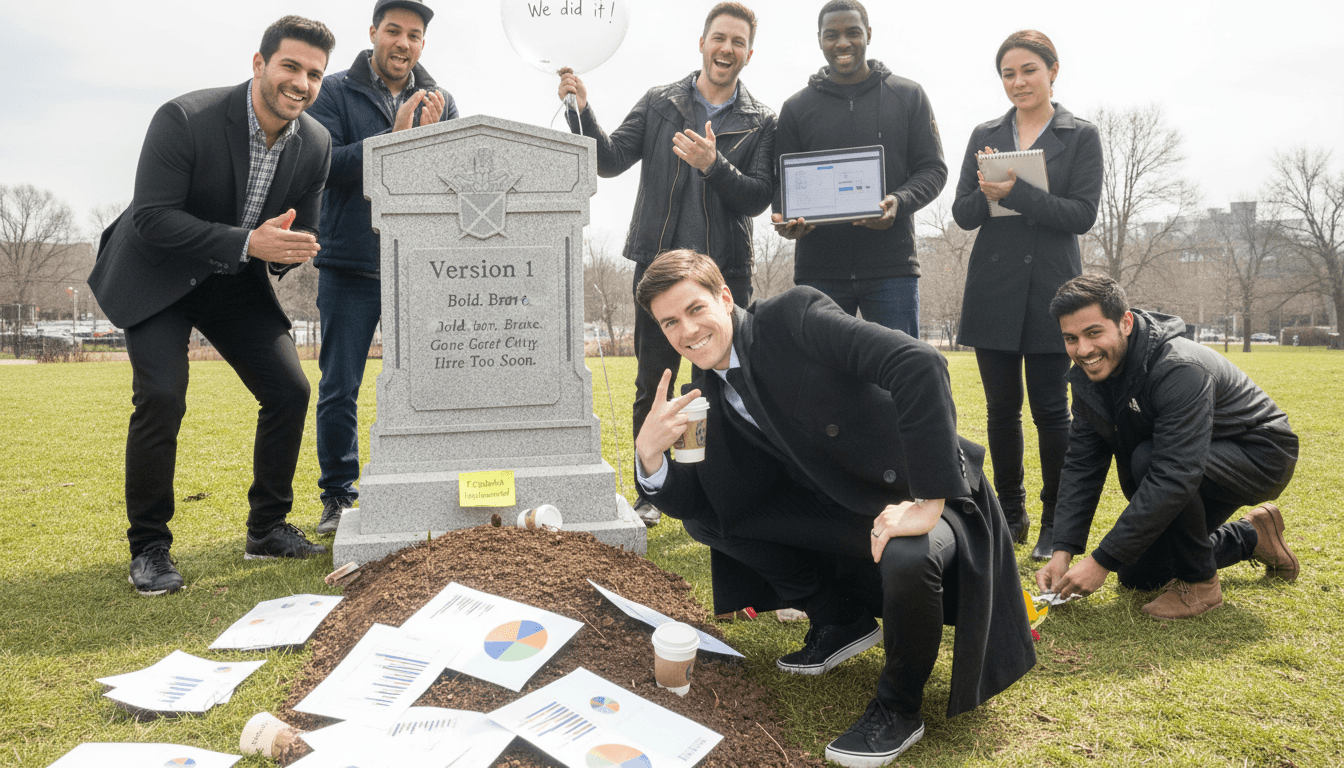The moment you invite everyone in, the spark walks out.
Most ideas don’t die because they’re bad. They die because too many people tried to make them better.

It always starts the same way.
Someone drops a big idea. The room lights up. Heads nod. You feel it — that rare moment where the room actually agrees on something good. Everyone says, “This is the one.”
Then the process kicks in.
The emails start. The decks start. The meetings multiply.
Everyone wants to be helpful. Everyone adds a little something.
And that’s where it starts to die.
Not in a big, cinematic explosion — in a slow, quiet fade.
One polite edit at a time.
A few “what ifs” and “just to be safes.”
A “can we try one more version?” that somehow becomes version twelve.
By the end, the thing that made everyone feel something has been replaced by something everyone simply likes.
It’s fine.
It’s balanced.
It’s safe.
And safe doesn’t get remembered.
Safe is what fills the feed with work that looks, sounds, and feels exactly the same.

It’s not collaboration that kills ideas — it’s over-collaboration.
The process has gotten so good at protecting brands that it’s stopped protecting creativity.
We’ve built entire systems designed to eliminate risk, but risk is the whole point.
Strong ideas need air, not alignment.
They need someone willing to defend the weird thing, the loud thing, the thing that might make a few people uncomfortable. The moment you start sanding down the edges, you also sand away the personality — and that’s what people actually connect with.
That’s not arrogance.
That’s the job.
The best work doesn’t come from consensus.
It comes from conviction.
From someone willing to take the heat, cut through the noise, and say, “This is it.”
Because creativity isn’t a democracy. It’s a decision.
And sometimes the most valuable sentence in a meeting isn’t “I agree,” it’s “We’re done.”
So the next time you feel that spark — that instant gut reaction of this is it — protect it.
Don’t email it to death. Don’t over-present it. Don’t invite ten more opinions to make sure it’s “bulletproof.”
Just make it.
Because when too many people get involved, good ideas don’t evolve — they disappear.
And maybe then, if we stop trying to please everyone in the room, we’ll finally have a few nice ideas again.

